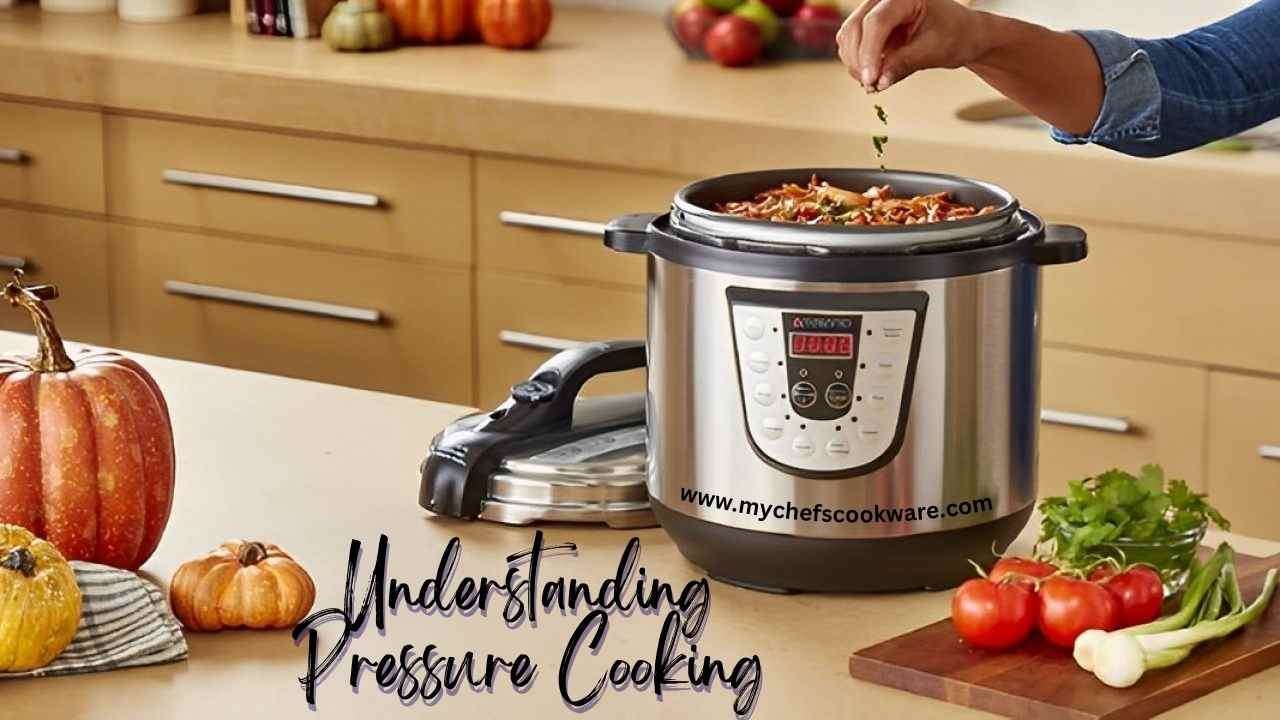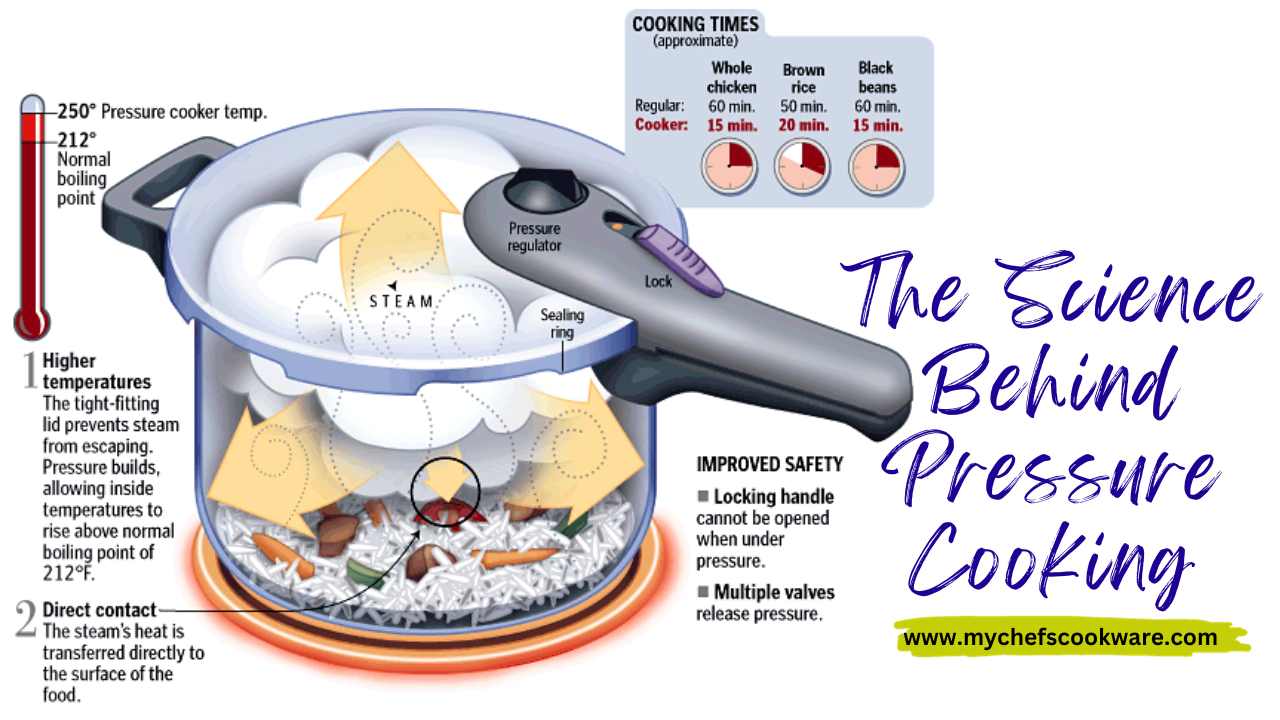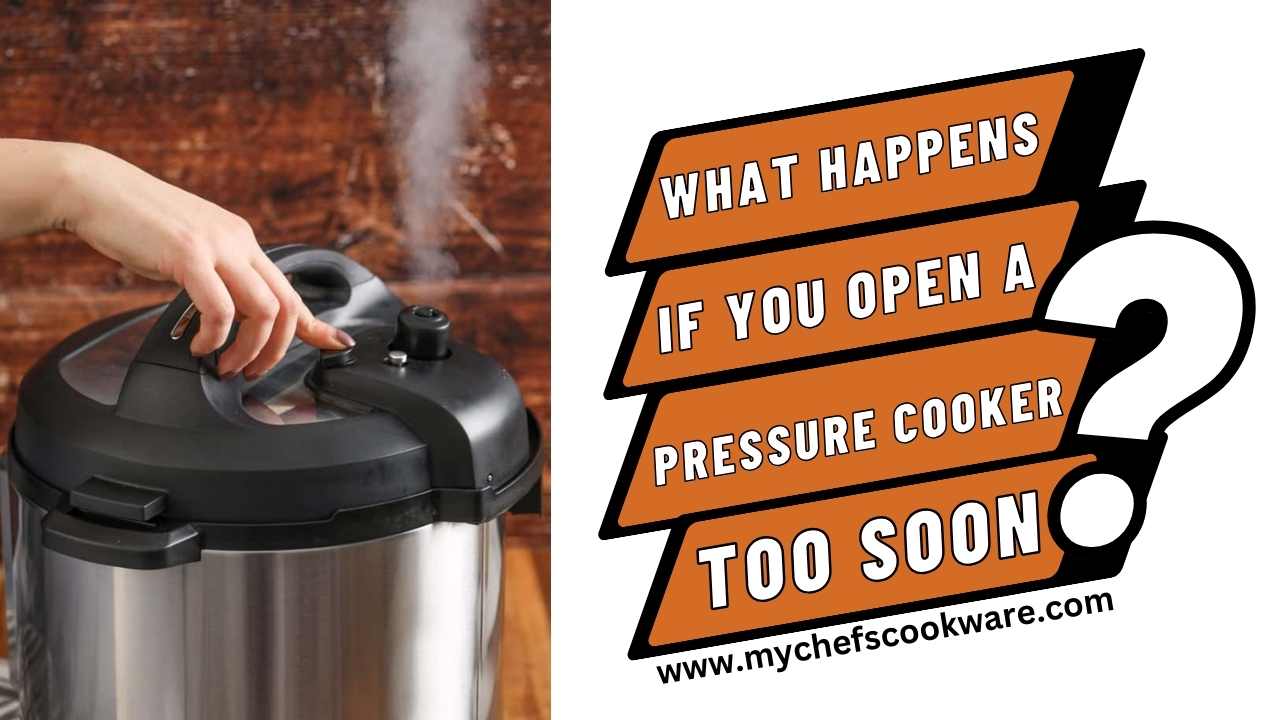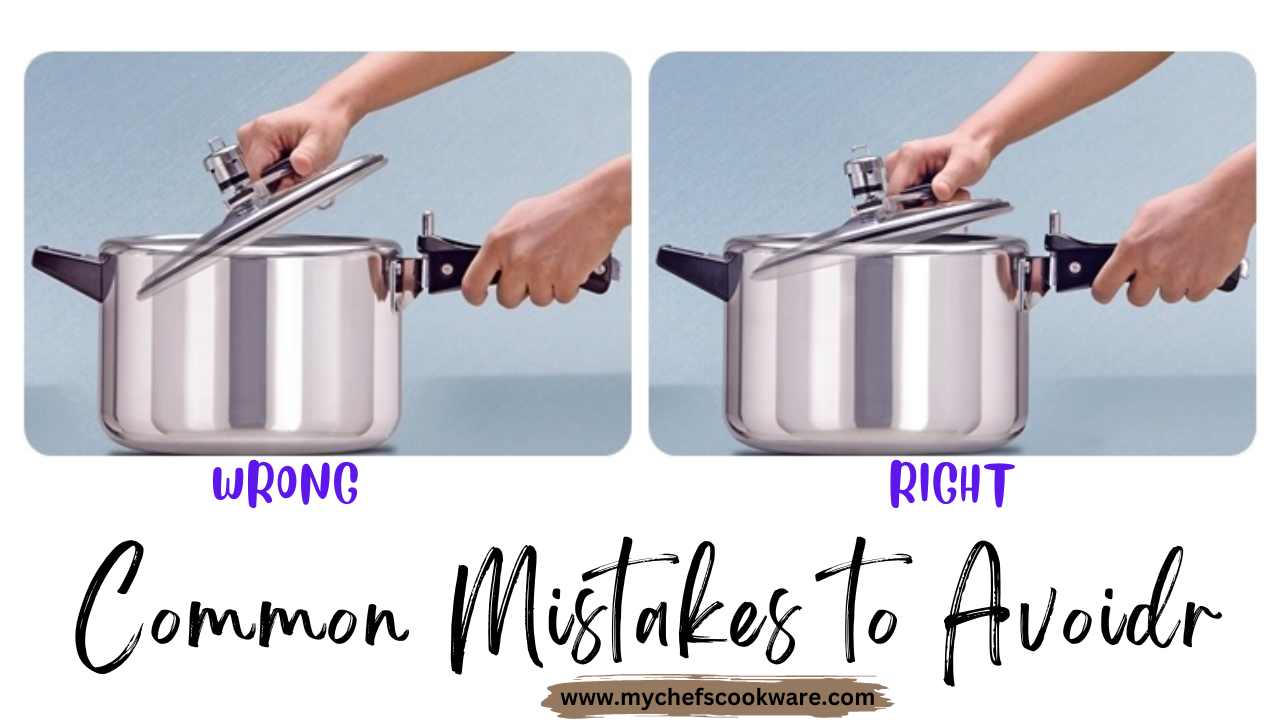Pressure cooking is a culinary technique that has revolutionized home cooking, allowing for quicker meal preparation and enhanced flavor retention. However, it’s not just about tossing ingredients into a pot and waiting for magic to happen. There’s a crucial element of safety that must be adhered to proper pressure cooker usage.
In this article, we’ll delve into the fascinating world of pressure cooking, exploring the science behind it, the necessity of safety precautions, and the critical question that many cooks ponder: What Happens If You Open a Pressure Cooker Too Soon? Understanding the answer to this question can ensure both delicious meals and your personal safety in the kitchen. So, let’s embark on this journey to uncover the secrets of pressure cooking and its potential pitfalls.
Understanding Pressure Cooking

Pressure cooking is a cooking method that relies on the power of steam and pressure to prepare meals efficiently. Here’s a breakdown of what a pressure cooker is, how it operates, and the advantages it offers:
What is a Pressure Cooker?
A pressure cooker is a specialized kitchen appliance designed to cook food quickly and efficiently under high pressure and steam. It consists of a sturdy pot with a locking lid and a pressure release valve. When sealed, it creates a sealed, airtight environment that traps steam and increases pressure within the pot.
Advantages of Pressure Cooking
One of the primary advantages of pressure cooking is its ability to significantly reduce cooking times. The sealed environment and increased pressure inside the cooker lead to faster cooking. For instance, dishes that typically take hours to simmer can be ready in a fraction of the time.
Furthermore, pressure cooking excels at flavor retention. The high-pressure environment forces steam into the food, infusing flavors and preserving the natural taste and nutrients. This results in dishes that are not only faster to cook but also incredibly flavorful and nutritious.
Read Also How Long to Cook Beef Tongue in Pressure Cooker
Importance of Proper Usage and Safety
While the benefits of pressure cooking are enticing, it’s crucial to emphasize the importance of using these appliances correctly and safely. Failure to do so can lead to dangerous situations. In the following sections, we’ll explore the science behind pressure cooking and the potential risks associated with opening a pressure cooker too soon.
The Science Behind Pressure Cooking

Now, let’s delve into the science behind pressure cooking, helping you understand why it’s such an efficient method for preparing meals:
The Physics of Pressure Cooking
At the heart of pressure cooking is the creation of a sealed environment within the cooker. When you lock the lid in place, the pot becomes airtight, and the steam produced during cooking cannot escape. As heat is applied, the temperature and pressure inside the pot rise significantly.
How Pressure Alters Boiling Points
One of the fundamental principles of pressure cooking is that increased pressure raises the boiling point of liquids. Under normal atmospheric pressure, water boils at 100 degrees Celsius (212 degrees Fahrenheit). However, when the pressure inside a pressure cooker is elevated, water can reach much higher temperatures before turning into steam.
Faster Cooking and Enhanced Flavor Infusion
This alteration of the boiling point is the key to pressure cooking’s speed and efficiency. The higher temperature inside the cooker allows food to cook more rapidly. Additionally, the increased pressure forces steam into the food, pushing flavors deep into the ingredients. As a result, dishes cooked in a pressure cooker are faster and exceptionally flavorful.
Understanding the science behind pressure cooking sets the stage for comprehending the consequences of opening a pressure cooker too soon. In the upcoming sections, we’ll explore the risks associated with premature openings and provide essential safety tips for a worry-free cooking experience.
What Happens If You Open a Pressure Cooker Too Soon?

Opening a pressure cooker before it’s safe to do so can have several undesirable consequences. Let’s explore the potential outcomes of prematurely opening a pressure cooker:
Consequences of Opening a Pressure Cooker Prematurely
One of the most immediate consequences is the sudden release of built-up pressure and steam. Pressure cookers are designed to create a sealed environment where pressure builds to increase the boiling point of liquids. When you open the cooker prematurely, the pressure inside is rapidly released, leading to a forceful expulsion of hot steam. This can be hazardous to your safety and cause scalding or burns.
The Sudden Release of Pressure and Steam
The release of pressure and steam happens abruptly and can catch you off guard. The force with which steam escapes can potentially cause harm if it comes into contact with your skin or eyes. Therefore, it’s essential to exercise extreme caution when handling a pressure cooker that has not been depressurized correctly.
Impact on Food Quality
In addition to safety concerns, opening a pressure cooker too soon can also affect the quality of your meal. The high pressure and temperature inside the cooker are what enable rapid and thorough cooking. Prematurely opening the cooker can disrupt this process, leaving your food undercooked or unevenly cooked. This can result in dishes that are not only unappetizing but also potentially unsafe to consume, especially if they contain ingredients like poultry or seafood that require thorough cooking to kill harmful bacteria.
Tips for Safely Opening a Pressure Cooker
Opening a pressure cooker safely is a must-do task to avoid accidents and maintain food quality. Here are some essential tips to ensure you release pressure correctly and safely:
Step-by-Step Instructions for Safe Pressure Release:
- Turn Off the Heat: Before attempting to release pressure, make sure you turn off the heat source. This is a crucial first step to prevent further pressure buildup.
- Natural Release Method: The natural release method involves letting the pressure inside the cooker drop naturally after cooking. Simply turn off the heat and wait for the pressure valve (or indicator) to drop. This can take some time, but it’s the safest way to release pressure.
- Quick Release Method: If you need to release pressure quickly, use the quick release method. To do this, carefully move the pressure valve to the “venting” position using a long-handled utensil (avoid using your hand). Steam will escape immediately, so stand back to avoid burns.
- Caution is Key: Always exercise caution when using the natural or quick-release method. Keep your face, hands and any body part away from the steam vent to prevent burns.
Common Mistakes to Avoid

Proper use of pressure cooking can be a breeze, but common mistakes can lead to unsafe situations and disappointing results. Here are some mistakes to avoid and tips to prevent them:
Common Mistakes with Pressure Cookers:
- Neglecting the Seal: Failing to check the seal or gasket of your pressure cooker can lead to improper sealing, causing pressure and steam leaks during cooking. Always inspect and clean the seal before each use.
- Overfilling the Cooker: Overfilling your pressure cooker can lead to clogs and uneven cooking. Be mindful of the cooker’s maximum fill line and avoid exceeding it.
- Ignoring Safety Features: Modern pressure cookers come equipped with safety features like pressure release valves and locking mechanisms. Ignoring or tampering with these features can lead to accidents. Always follow the manufacturer’s instructions and use safety features as intended.
- Using the Wrong Release Method: Using the wrong pressure release method can result in unsafe pressure buildup. Be sure to choose the appropriate release method based on the recipe and timing requirements.
Preventing Errors for Safe Pressure Cooking:
- Read the Manual: Familiarize yourself with your pressure cooker’s user manual. Each model may have unique features and instructions; understanding them is crucial for safe operation.
- Follow Trusted Recipes: When pressure cooking, stick to trusted recipes that provide recommended cooking times and release instructions. This minimizes the risk of errors.
- Regular Maintenance: Keep your pressure cooker in good condition by regularly inspecting and cleaning it. Replace worn-out seals or gaskets as needed to maintain a proper seal.
- Practice Caution: Always exercise caution when handling a pressure cooker. Understand the risks involved and prioritize safety when cooking under pressure.
Conclusion: What Happens If You Open a Pressure Cooker Too Soon
In the realm of culinary experience, pressure cooking reigns supreme. Yet, the efficiency of this method must always be complemented by a steadfast commitment to safety. So, as we conclude our exploration of What Happens If You Open a Pressure Cooker Too Soon, let’s recap the vital points.
Understanding how pressure cookers work is pivotal. These kitchen marvels use high pressure and a sealed environment to cook food swiftly and enhance flavors. But what happens when you open one too soon? The answer is a potentially hazardous release of pressure and scalding steam, which can jeopardize both your meal and your safety.
To avoid such mishaps, we’ve shared key safety tips, including methods for safe pressure release, such as natural and quick release. Caution during these processes is paramount.
We’ve also highlighted common mistakes to avoid, like neglecting the seal or overloading the cooker. Avoiding these pitfalls is crucial for a safe and satisfying pressure cooking experience.
